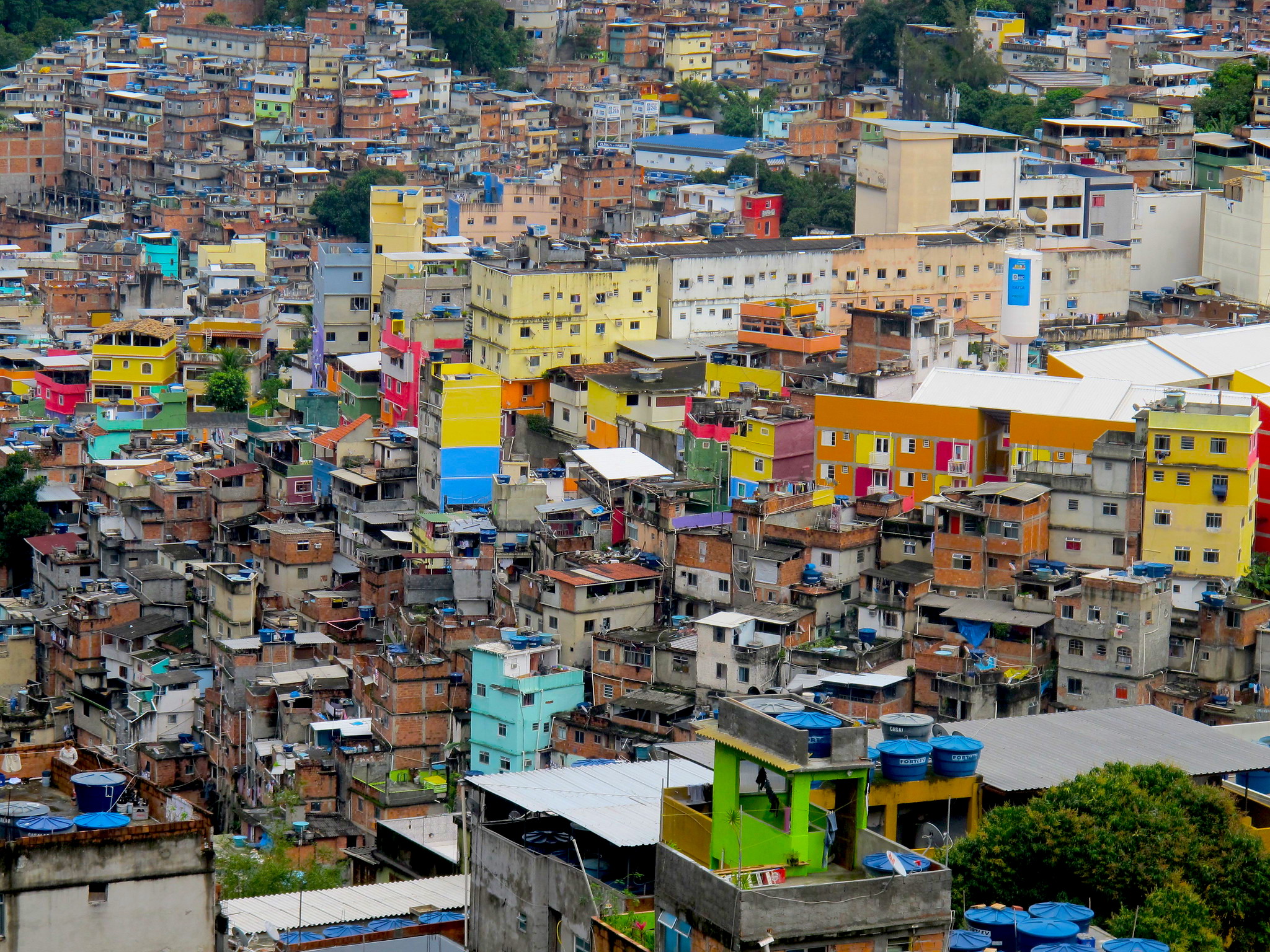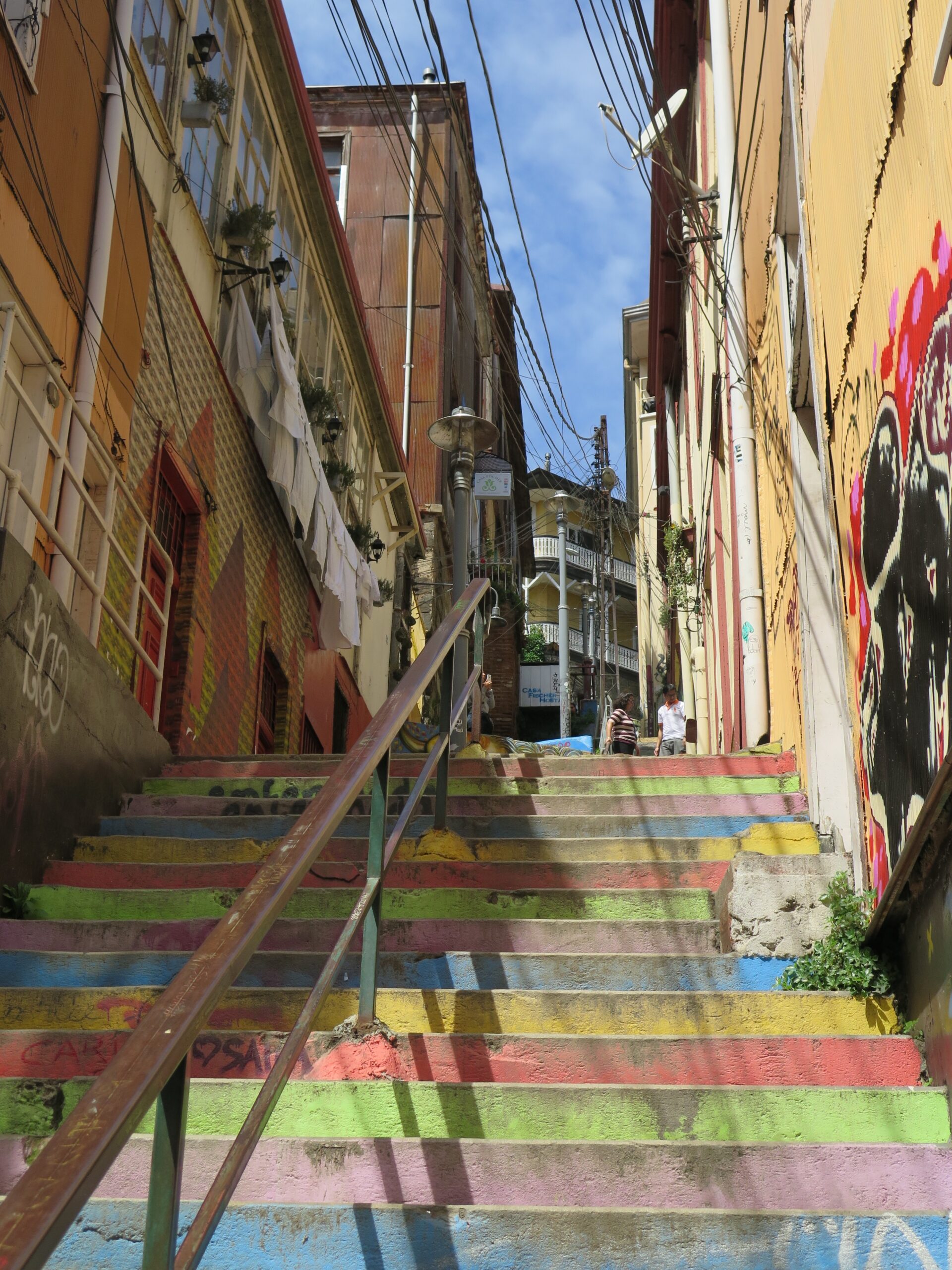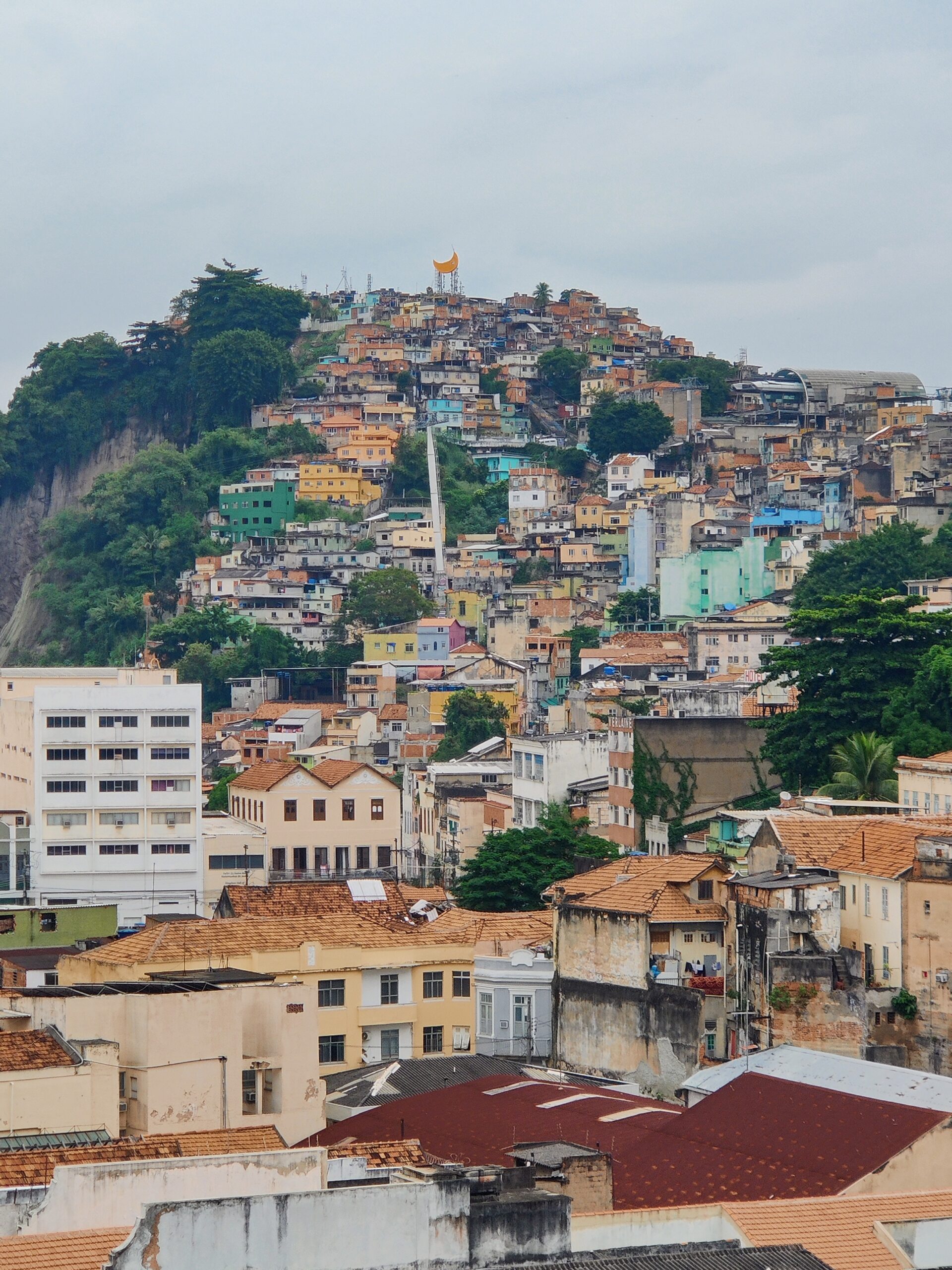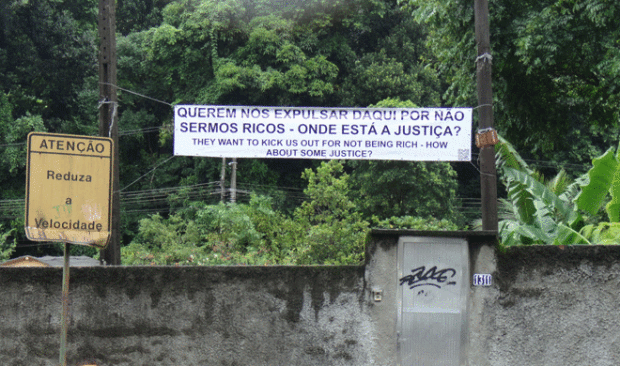
Clique aqui para Português
The United Nations still frequently uses the term “slum” synonymously with “informal settlement” to describe where at least 1 billion of the world’s people live. Broadly speaking, “informality” when it comes to housing indicates a form of urban planning without public sector planning and oversight. However, the condition of the “informal” is more complex and warrants a critical exploration.
Crucially, while what we call “informality” does presuppose a lack of top-down planning, whether it be in the form of master planning, zoning, standard-setting or other forms of municipal regulation, the decentralized, community-centric approach that often emerges can be an asset. What most defines the quality of what is produced informally is not the lack of oversight from above but the ability to harness flexibility from below.
Heritage and Vitality in Rio’s Favelas
The potential of Rio de Janeiro’s favelas to generate and expand new cultural amenities is well established. Favelas are associated with the origins or maintenance of all of Rio de Janeiro’s performatic tourist attractions, from carnival to New Year’s celebrations, samba to passinho, soccer to capoeira. This is because of the creativity inherent to informally built communities, not just because “necessity is the mother of invention” but because a lack of top-down regulation encourages creative expression.
More recently, the informal nature of favelas has allowed residents to address their own infrastructure needs in sustainable ways, such as by producing their own sewage biosystems, green roofs, agroforestry projects, solar systems, and more.
On a historical scale, opportunistic—informal—urbanism, structured by a complex interplay of resource availability and community conventions, was the basis for the development of virtually all city centers prior to the industrial period, a condition that is valued as heritage just as often as it is mercilessly cleared to give rise to new construction, as evidenced among so many of Europe’s urban UNESCO World Heritage Sites, alongside some elsewhere, like Valparaiso, in Chile.
![Valpariso, in Chile, a UNESCO site "characterized by a vernacular urban fabric adapted to the hillsides," (UNESCO) is heralded as an "unplanned city [that] has always embraced chaos" (National Geographic). Photo: RioOnWatch](https://rioonwatch.org/wp-content/uploads/2023/10/Valparaiso-por-RioOnWatch-1-scaled.jpg)
In the Brazilian context, precedent for valuing informal spaces as heritage already exists, albeit rarely in favelas. The National Historic and Artistic Heritage Institute (IPHAN) recognizes many sites that continue pre-industrial building practices and patterns of habitation, either exhibiting highly irregular colonial plans, aggregated piecemeal based on the availability of agricultural or mining resources, or created in vernacular styles by Italian, Japanese, or other diaspora communities.

In Rio de Janeiro, just as some monuments are enshrined as part of carioca heritage by these same preservation bodies, favelas act as equally enduring testaments to the vitality that emerges from informal urbanity, yet are not mentioned. Far from their reputation as ephemeral, ahistoric spaces, many favelas trace their roots to the same logics of opportunistic, economic necessity and creativity that accompanied more prestigious colonial urbanism, and even surpass the longevity of many official neighborhoods.
For example, Horto Florestal, a rural informal settlement within the Botanical Gardens neighborhood, has been continuously inhabited since the late 1500s, and many of today’s resident families have origins in the area dating back to the imperial 1800s. Morro da Providência, called “Favela Hill” upon its founding in 1897 and leading to widespread use of the term, represents well over a century of continuous, autonomous urban development, and is perhaps one of the most extensive remnants of Rio de Janeiro’s urban fabric from before the cataclysmic planning reforms of the Pereira Passos administration (1902-1906). Quilombo histories also mark the history of many of Rio’s favelas, both as federally designated, such as Sacopã or Pedra do Sal, or as in locations that lack official recognition, such as Jacarezinho.

A Theoretical Approach to Informality
What ultimately differentiates those informal spaces that become immortalized through the lens of heritage, versus those where the official goal has become all but total destruction, is stigma. Existing outside official urbanistic frameworks, it remains a conscious decision on behalf of the city to grant some of its oldest settlements the privilege of integration, and others a continued regime of exclusion, precarity, and displacement.
Theorist Oren Yiftachel, known for his work on Israeli-Palestinian cities, characterizes the underlying situation through the term “gray space,” referring to urban conditions that are inseparable from a quasi-legal status, undeniably present but willfully overlooked in official guidelines. “Gray” informal zones are present in all strata of the city, he contends, with illegalized conditions often created from elite corruption just as much as underserved, infrastructural necessity. Without inclusion in more just development practices, such spaces end up caught between two options for resolution. If granted enough favor in political perception, they may be “whitened,” with their roots in the informal actively concealed, yet subsequently allowed to persist in accordance with public narrative. Or they are “blackened,” their informality treated as grounds for violence via destruction and displacement.
Sapana Doshi, in her analysis of Indian slum discourses, also cautions against the simplistic dichotomy of formal and informal, noting that conditions of development that fall outside legal oversight are subject to a wide range of labels corresponding to heterogenous experiences, and in turn assigned unequal degrees of stigma. She refers to the concept of “graduated citizenship”: communities that fall under greater degrees of stigma in turn face greater exclusion from urban dialogue, regardless of their material or political realities.
The Case of Horto
Horto Florestal, in Rio’s South Zone, is a prime case study of the legal ambiguities of informal construction, wherein the surrounding grounds of the Tijuca Forest and Botanical Gardens research plots have long been a hotbed for construction, technically forbidden under the area’s IPHAN designation in 1938 but nevertheless allowed to remain unquestioned for decades. These various constructions are situated within a complex network of narratives that illustrate the power of stigma to define “gray” urban conditions, wherein the standards of permissible informality have been anything but impartial.
Apart from the Horto Florestal favela complex, which contains many of the oldest structures on the property, Pontifical Catholic University of Rio de Janeiro (PUC-Rio) historian Rafael Mendonça notes that, in a contradictory decree in 1968, the Federal Data Processing Service (SERPRO) headquarters and surrounding power station were authorized on this same tract of land, and now remain unquestioned due to the building’s key role in the local economy. In the 1990s, the high-income Canto e Mello condominium complex was built on the slopes of the Morro das Margaridas, also located within the Gardens’ property. Its construction was condemned in court at the time, although it remains standing, uncontested and without enforcement, to this day.

It was only when new low-income residents began to move in that calls for the Botanical Gardens’ preservation became a justification for militarized displacement. The push for Horto Florestal’s demolition began in 1980, in response to the growth of the regularized Dona Castorina community, a low-income area that had federal authorization by the same set of decrees that authorized the construction of SERPRO’s headquarters. Despite Horto’s earlier expansion being city-sanctioned, and its informal core predating all of its more affluent surroundings, the settlement nevertheless faced its first wave of eviction notices shortly thereafter, commencing a pattern of mounting threats and intimidation. The pressure on Horto residents to leave has continued for over forty years, eventually with the backing of the Military Police, and with major news outlets such as O Globo contributing to the narrative of Horto constituting an “invasion” despite its historical presence. Today, the areas with electricity infrastructure and luxury condominiums have been “whitened,” while their lower income counterpart has been subjected to an onslaught of decades of legal antagonism, at times boiling into on-the-ground violence.
The Botanical Gardens presents a case where all construction is “informal” in a sense, persisting despite federal heritage designation declaring the site solely for botanical research. However, the divergence in perception between the economically advantageous and lower income spaces within is enormous. After all, the Horto favela sits on some of the most valuable land in all of Rio, valued at R$10.6 billion (US$ 2.12 billion) and highly desirable for the expansion of the largely upper-class surrounding area. Despite its centuries-old presence, it was “ephemeralized” in public perception, the assets derived amidst its informality denied in favor of a narrative that solely focuses on precarity and ahistoricity.
Historicity as Power

Canadian geographer Nicholas Blomley describes the connections between the ephemeralization of property with racialized narratives that have long denied non-European histories their legitimacy, noting that claims of permanence in colonial societies ultimately have to be “persuasive” to the socioeconomic elite. Favela residents, in Horto and countless other cases, have been constantly deemed “invaders” on their own land, a rhetorical move that persists in full contradiction with historical reality, and enabled entirely via the predatory gaze of real estate speculation within the “gray” urban condition. They are kept in a state of precarity, without the language of titles and regularized plots. At the same time such regularization would render them attractive to elite development. Either way, residents are left vulnerable to arbitrary and corrupt economic exploitation, in a permanent gray zone. [As an aside, this is why housing organizers in Brazil are working to introduce Favela-Community Land Trusts.]
Annelise Caetano Fraga Fernandez, in her historiography of the Pedra Branca State Park in Rio’s West Zone, observes the politicization of urban heritage, in a local context, as a force that immortalizes some constructions as historic, while condemning others as illegitimate, even while both conditions have informal origins. Whether in the form of resource extraction or touristic leisure, neighborhoods are established as suitable for preservation based on their perceived economic value, and areas that fail to contribute are cut out, rather than interwoven, from the overall urban fabric. Urbanization is, in a sense, conceived as a zero-sum game, where some forms of informality persist and others are weeded out under the assessing gaze of capital.
The reality of the informal, however, is that such conflicts do not represent loss, but multiplicity. Informality encompasses many urban conditions that are often allowed to thrive when economically advantageous, whether it be in cases of elite condominiums, constructed at illegal heights along the city’s hillsides, or even in pre-industrial historic city centers that predate industrialized planning, now enshrined as heritage monuments or tourist draws across Latin America. Today, the vibrancy of favela communities represents another equally invaluable asset to emerge from the informal, but one that cannot be monetized and has been routinely suppressed due to its incompatibility with elite urbanity.
![Narrow alleyway in Vidigal favela in Rio de Janeiro [left] and in Santorini [Greece]. Photos: RioOnWatch Narrow alleyway in Vidigal favela in Rio de Janeiro [left] and in Santorini [Greece]. Photos: RioOnWatch](https://rioonwatch.org/wp-content/uploads/2023/10/Vidigal-x-Santorini.jpg)
![View of Vidigal favela in Rio de Janeiro [left] and in Santorini [Greece]. Photos: RioOnWatch View of Vidigal favela in Rio de Janeiro [left] and in Santorini [Greece]. Photos: RioOnWatch](https://rioonwatch.org/wp-content/uploads/2023/10/Vidigal-x-Santorini-views.png)
